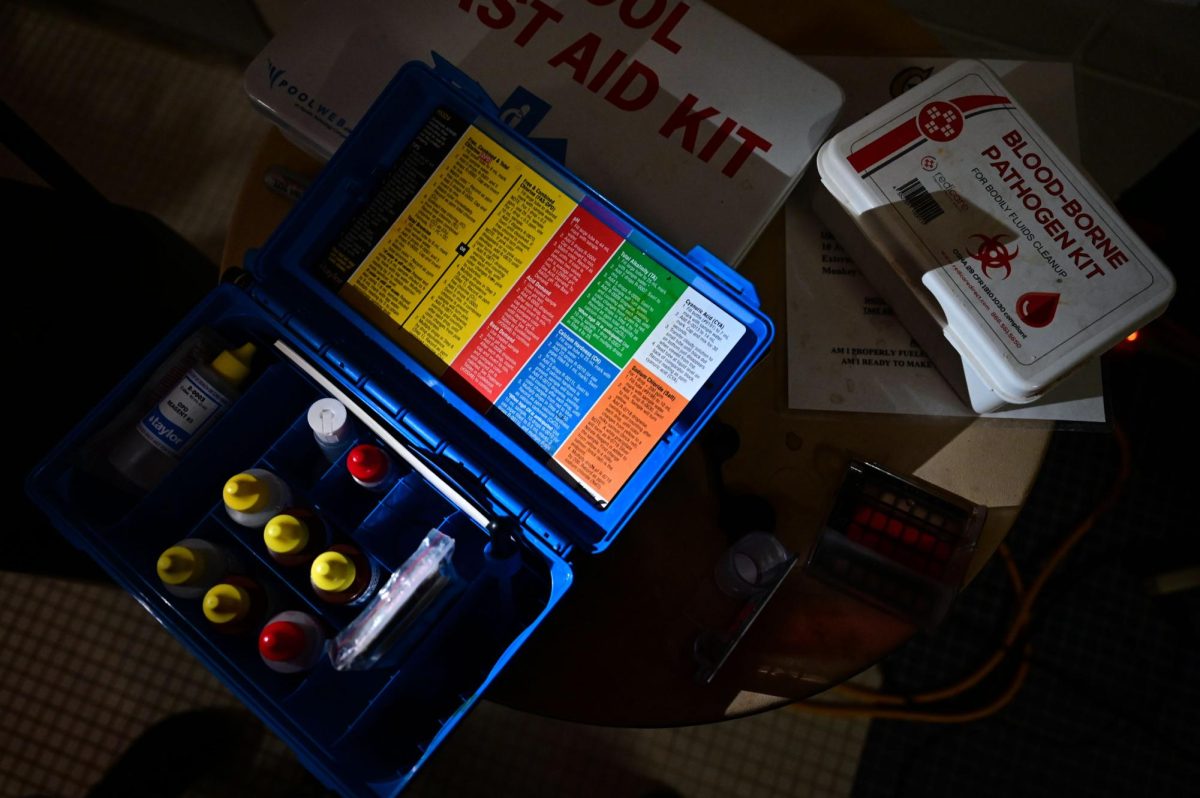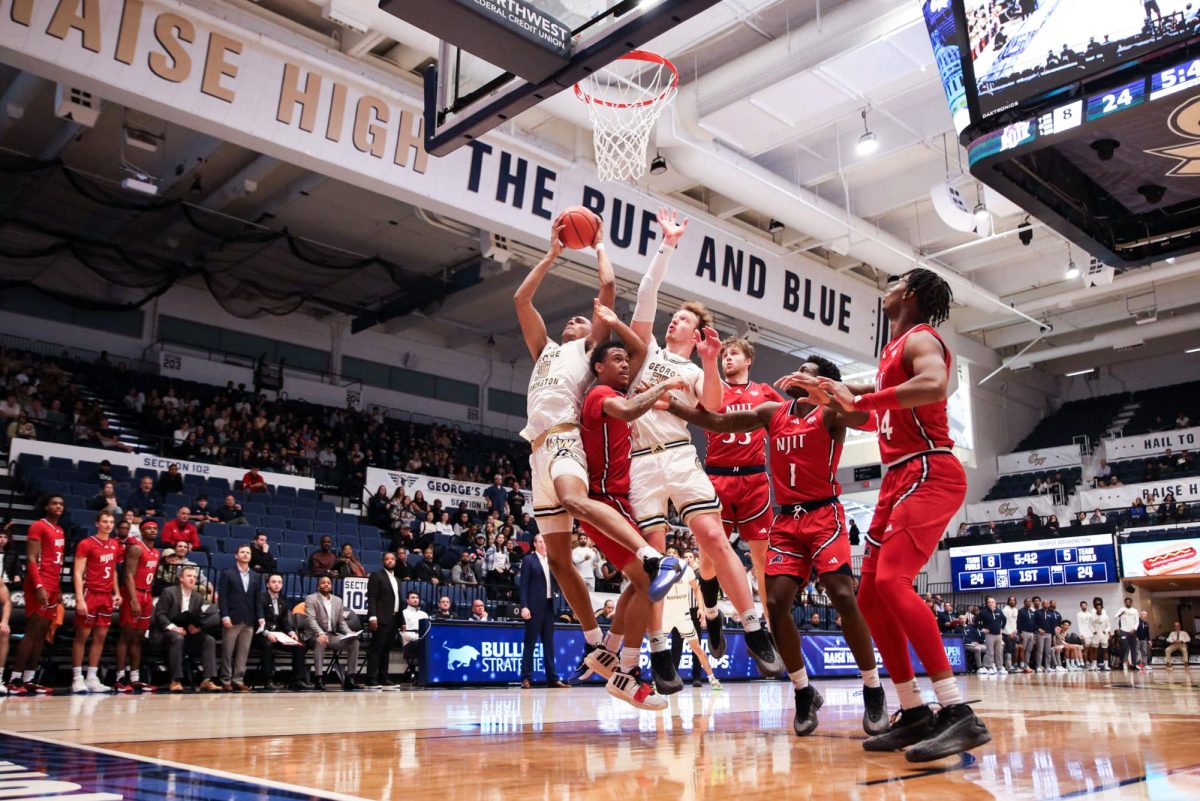Like Live Strong bands, red states and “The O.C.,” GW basketball is suddenly very hot right now. They’re in the Top 25 for the first time since the Clinton administration. They’re ESPN.com’s “it team” of the year, which is basically shorthand for fun to watch, not from a major conference and likely to surprise people in March. Their coach, Karl Hobbs, has been on half a dozen radio and TV shows just since Sunday. And according to a lot of newcomers to the bandwagon, they’re an “upstart” team.
But to dub them as the little team from the little conference who came out of nowhere to beat the big guys is not completely accurate. Sure, beating Michigan State and Maryland in consecutive days was unexpected, but to appreciate how this Top 25 ranking came about, you have to look back further than just last weekend – even further than the two months of practices and games that led up to it.
In late summer 2001, back when Pops was just another cereal to GW students, a relatively unknown kid named Mike Hall made a recruiting visit to Foggy Bottom from his home in Chicago. Still getting settled into his new job, Colonials head coach Karl Hobbs showed Hall around campus and believed he had made a good impression. But there was one problem.
“When Mike Hall was on his visit, his mom said, ‘I like the school, but my only concern about him coming to GW, I’m just a little nervous about the area. And if something were to happen, they would attack Washington D.C. first,'” Hobbs recalled. “And coach (Steve) Pikiell and I, we were like, ‘Why would she (think that)? It’s Washington D.C. That’s crazy.'”
Just over a week later, the date read 9/11/2001.
A difficult recruiting task – drawing top talent to a team that had just been nearly depleted of it, to a program that had just been marred by a slew of off-court embarrassments – became a lot more challenging. Another recruit, a Nigerian shot-blocker named Akin Akingbala, was set to make his visit just days after the terrorist attacks and couldn’t reschedule.
With planes grounded nationwide, the coaches rented a car, picked up Akingbala from Connecticut, where he was in high school, and drove him down to Washington. The prospective college town they wanted to showcase looked like it was under martial law – a tough sell, to say the least.
“It was the worst visit we had,” Hobbs later recalled.
Akingbala was likely lost (he would sign with Clemson), and so too, the coaches thought, was Hall. With the airlines just starting to fly again, Hobbs and Pikiell debated whether it was worth flying to Chicago to keep working on signing the forward.
“We were contemplating, ‘Should we even go and do a visit with Mike? Because we know we’re not going to get him now,'” Hobbs said. “And we said, ‘You know what, let’s take a chance. Let’s get on the flight.'”
Both coaches went to Hall’s home, and while they were there, the recruit (and his mother) committed to GW. Hobbs and Pikiell were ecstatic.
The signing of Hall cemented the core of a recruiting class that already included Omar Williams – their most prized recruit, from Philadelphia – and Pops Mensah-Bonsu. All three were relatively unknown. Williams and Mensah-Bonsu did not visit any other schools besides GW, and Hall was widely overlooked while playing on an AAU team that included current NBA player Andre Iguodala and Michigan State guard Shannon Brown.
But today, those three players make up half of what I would call GW’s starting six – the players who share the vast majority of minutes on the court (T.J. Thompson, Carl Elliott and J.R. Pinnock are the other three). The coaches would add Alex Kireev and Elliott later (Elliott had to go back to prep school for another year), but when they signed those three forwards, it gave the program something it was desperately in need of: hope.
And everything that has happened since, from the team’s strong recruiting class the following year to the BB&T wins to whatever else happens this year, can be traced back to the signing of those first recruits.
A lot has happened along the way, obviously – for the players, good wins and tough losses and long days practicing and lifting weights; for the coaches, many more recruiting trips and hours spent reviewing game film.
But without the foundation set by the first recruiting class, all of the progress that has turned GW into a Top 25 team today would be a lot more difficult and less likely. The Colonials would lose 33 games in Hobbs’ first two seasons, including an awful 10-game winless streak toward the end of 2001-02. Ray Charles drew more fans at the Smith Center than the men’s basketball team ever did that first year.
Have one or two seasons like that and you’re rebuilding. Lose like that repeatedly without strong recruiting classes and you’re Fordham – or if you’re a coach, fired. But GW was clearly headed in the right direction once Hall and the others were signed, which made subsequent recruiting successes easier. Elliott and Pinnock would join Ricky Lucas and Jaaron Greene as freshmen in 2003, and by the time Chris Monroe graduated, the overhaul was just about complete.
It was Hobbs’ team, and after an NIT appearance last year, the Colonials are clearly on a path to the NCAA Tournament right now. Seeing that ranking next to GW’s name, like watching the team play in the tourney in March will be, is both exciting and very unfamiliar for students and other college basketball fans. But it hardly came out of nowhere.






